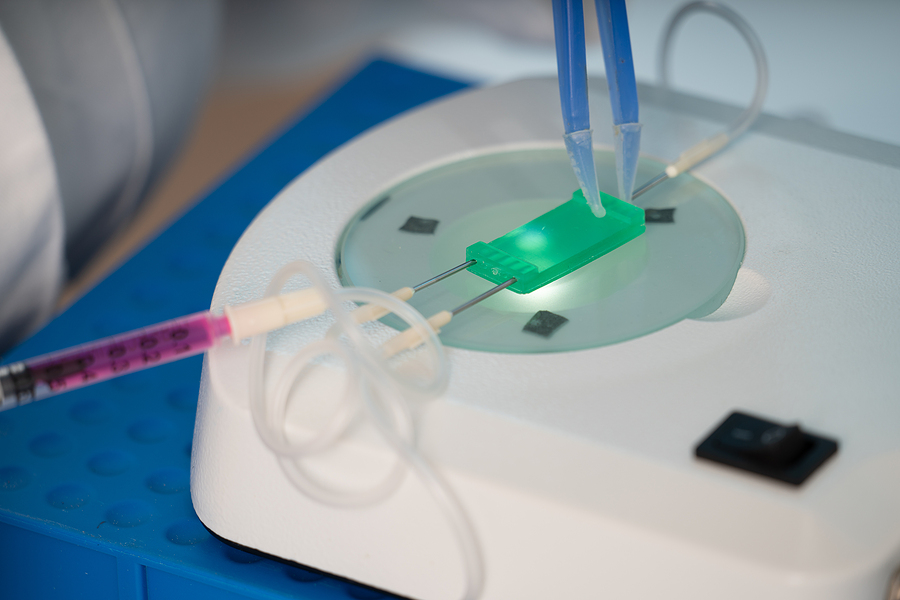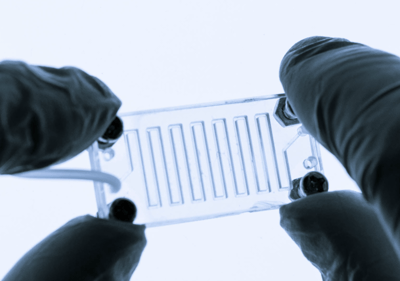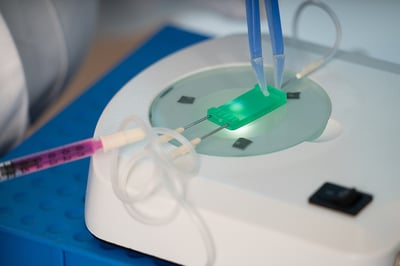Plasma Treatment Articles
Plasma Activation,
Plasma Cleaning
|
2 min read

Many manufacturers and researchers have the question of how to clean microfluidic devices. A recommendation might be to clean the device with oxygen plasma to remove any small amount of contamination that may have accumulated. Or in a prototype phase, you may use a piece of adhesive tape to remove the particulate from the surface of the PDMS before activation, similar to removing lint from a sweater. However, these actions are not the root cause of the problem. The best method would be to start with a completely clean surface by eliminating the contamination at the source.
 There is no practical way to clean produced microfluidic devices once they are contaminated post-production. The best way to create clean devices is to have an environment that is clean during the creation of the PDMS and having a clean process to bond that PDMS to the silicon-containing substrate so that there isn’t any introduction of foreign material or particles.
There is no practical way to clean produced microfluidic devices once they are contaminated post-production. The best way to create clean devices is to have an environment that is clean during the creation of the PDMS and having a clean process to bond that PDMS to the silicon-containing substrate so that there isn’t any introduction of foreign material or particles.
If the fluids that are being introduced into a microfluidic device have foreign bodies or particles, then the microfluidic device becomes like a filter for removing the particulates in that fluid. This means that in time the device will not operate properly and give faulty results. Whenever possible, there should be clean fluids used or filter the fluids before introduction to the device so that there isn't contamination and the microfluidic device can stay clean to obtain the proper operation.
It is vital to store microfluidics in a clean environment before use. If they are not stored correctly, there is a risk of contamination which cannot be easily removed. The storage area for microfluidic devices should be free from any particles that could accumulate on the microfluidics' surface. An enclosed container or microenvironment flushed with HEPA filtered air work well for storing microfluidic devices.
 When manufacturing microfluidic devices, it is important that the tooling and garments worn by operators and the plasma system don’t generate particulate matter so that the devices don’t become contaminated. If the tooling used to produce devices isn’t clean, this can transfer to the actual devices themselves, which will create a dirty device to start with. What the operators wear when producing devices is critical as well. Sleeves, hairnets, and gloves are encouraged to keep any human contamination from entering the production step. The plasma system also should be a dedicated system to produce microfluidic devices so that there isn't cross-contamination from another manufacturing process.
When manufacturing microfluidic devices, it is important that the tooling and garments worn by operators and the plasma system don’t generate particulate matter so that the devices don’t become contaminated. If the tooling used to produce devices isn’t clean, this can transfer to the actual devices themselves, which will create a dirty device to start with. What the operators wear when producing devices is critical as well. Sleeves, hairnets, and gloves are encouraged to keep any human contamination from entering the production step. The plasma system also should be a dedicated system to produce microfluidic devices so that there isn't cross-contamination from another manufacturing process.
Plasma chambers that are made with any metals can lead to the generation of fine particulate matter that will contaminate the microfluidic device that is being manufactured. Choosing a plasma chamber system that is made with borosilicate or quartz glass is ideal because these materials do not introduce contaminants into the system during microfluidic production.
To summarize, there needs to be a system in place where the process starts clean and continues clean throughout in order not to introduce contaminants into the system. This is extremely important for microfluidic devices as they are very sensitive to contaminants in order to produce precise results. It’s imperative to always look for root causes of contaminants and prevent contamination rather than cleaning or removing a contaminant afterward. As you can see from this article, there are many sources of contamination, and that's why starting clean and staying clean is the proper approach.
To learn more about the best practices for plasma activation of microfluidic devices, please read our eBook titled "How to Improve Burst Pressure and Yield in Microfluidic Devices."
For more information on how microfluidics go bad please read this article published by the American Chemical Society.
Plasma: +1 (248) 761 9253
Distribution: +1 (248) 549 8600
Fax: +1 (248) 549 3533
info@thierry-corp.com
Comments